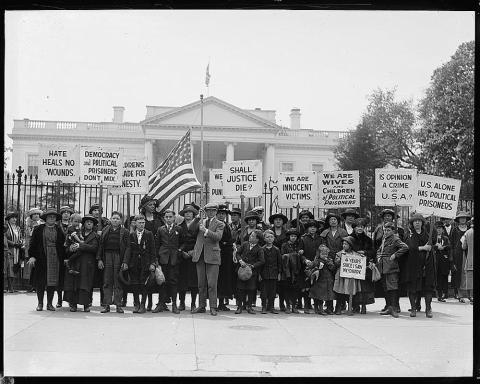
Description
Following World War I, protests by women and children of political prisoners sought to increase awareness of the plight of men jailed in violation of the Espionage Act during the war with support from the Americal Civil Liberties Union (ACLU). The protest itself was lead by Kate Richards O'Hare, an anti-war activist who was also jailed under the Espionage Act but was pardoned in 1920 after public outcry for her release. O'Hare's goal was to apply pressure to President Warren G. Harding to pardon those still jailed, which he finally did after the women and children stood in protest for two months. However, all prisoners would not be released until President Franklin Delano Roosevelt took action on December 23, 1933.
Transcript of Signs Held by the Children's Crusade Protestors
Source-Dependent Questions
- Consider the text of the signs, how were the slogans created to maximize sympathy for the plight of the protestors?
- Why would women and children be necessary to bring awareness to the cause of political prisoners in the United States at this time?
- Compare this document to the Stories from Selma. Why are young people so important in the protest movement to sway public opinion?
Citation Information
"Children's Crusade for Amnesty," 1922. Courtesy of Library of Congress